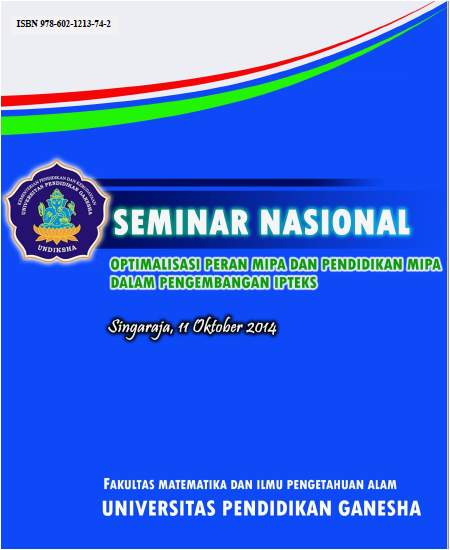PENENTUAN GLISERIDA SECARA ENZIMATIS DENGAN SISTEM DISPOSABLE BIOSENSOR
Abstract
Penentuan gliserida secara enzimatis menggunakan disposable biosensor telah dilakukan. Gabungan enzim (enzim lipase, gliserol kinase dan gliserol-3-fosfat oksidase) diamobilisasi pada matrik pendukung PVC (polyvinyl Chloride) dan silikon berpori. Enzim amobil dirangkaikan pada elektroda dari sistem disposable biosensor. Dalam penelitian ini, substrat yang mengandung gliserida dikatalisis secara bertingkat dengan enzim berturut-turut yaitu enzim lipase termostabil yang dihasilkan bakteri termofilik isolate Banyuwedang (Baccillus BYW2), gliserol kinase dan gliserol-3-fosfat oksidase) menghasilkan hidrogen peroksida. Hidrogen peroksida selanjutnya bereaksi dengan O2 membentuk H2O. Pengurangan kadar oksigen dalam sistem diukur menggunakan alat DO meter. Arus akibat reaksi oksidasi digunakan untuk mengukur konsentrasi gliserida. Konsentrasi enzim optimum dan kejenuhan permukaan PVC dan silikon berpori yang stabil digunakan sebagai parameter keberhasilan respon sensor. Konsentrasi gliserida dengan dua matrik PVC dan silikon pada rentang antara 0-25 µM dalam buffer posfat menunjukkan garis lurus. Hal ini menunjukkan matrik PVC dan silikon dapat digunakan untuk mengukur gliserida system disposable biosensor
Kata-kata kunci : biosensor, digliserida, lipase, PVC, silikon berpori.
Abstract: Determination of glycerol enzymatically using a disposable biosensor has been done. Combined enzyme (lipase, glycerol kinase and glycerol-3-phosphate oxidase) immobilized on a supporting matrix of PVC (polyvinyl chloride) and porous silicon. Immobilized enzyme coupled to the electrodes of a disposable biosensor system. In this study, the substrate containing glycerides multilevel catalyzed by the enzyme consecutive thermostable lipase produced by thermophilic bacteria isolates Bishopscourt (Baccillus BYW2), glycerol kinase and glycerol-3-phosphate oxidase) produces hydrogen peroxide. Hydrogen peroxide then reacts with O2 to form H2O. Reduction of the oxygen content in the system was measured using a DO meter. Flow due to the oxidation reaction is used to measure the concentration of glycerides. The optimum enzyme concentration and saturation PVC surface and a stable porous silicon is used as a parameter of success of the sensor response. Concentrations of glycerides with two matrices PVC and silicon in the range between 0-25 mM in phosphate buffer showed a straight line. This shows the matrix of PVC and silicon can be used to measure the disposable biosensor system glycerides.
Key words: biosensors, diglycerides, lipase PVC, porous silicon
